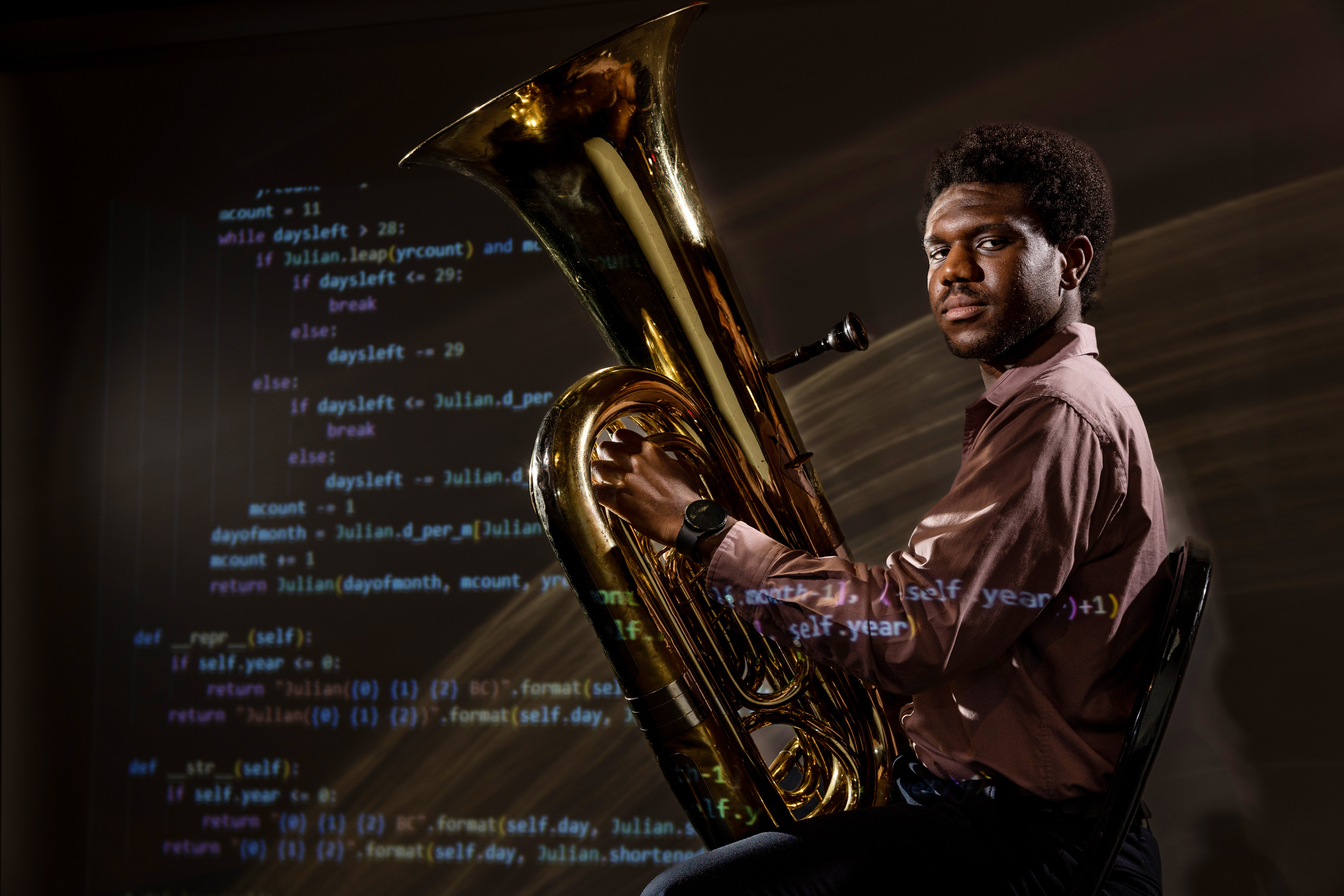Holding information in mind may mean storing it among synapses
Comparing models of working memory with real-world data, MIT researchers find information resides not in persistent neural activity, but in the pattern of its connections.
Q&A: A fresh look at data science
MIT Visiting Scholar Alfred Spector discusses the power of data science and visualization, as well as his new textbook on the subject.
Engineering in harmony
AeroAstro major and accomplished tuba player Frederick Ajisafe relishes the community he has found in the MIT Wind Ensemble.
Enzyme “atlas” helps researchers decipher cellular pathways
Biologists have mapped out more than 300 protein kinases and their targets, which they hope could yield new leads for cancer drugs.
Moving water and earth
A new understanding of how particle shape controls grain flow could help engineers manage river restoration and coastal erosion.
Looking to the past to prepare for an uncertain future
Using sand and rock, MIT senior Aviva Intveld tells stories of ancient climates.
A new way to assess radiation damage in reactors
Engineers designed a tool that enables faster measurements of the condition of some nuclear reactor components, potentially extending their lifetimes.
Lecture series aims to demystify, celebrate tenure
DMSE’s Tenure Talks gives glimpse into the hard work, commitment, and decisions behind one of academia’s most important posts.
Unpacking the “black box” to build better AI models
Stefanie Jegelka seeks to understand how machine-learning models behave, to help researchers build more robust models for applications in biology, computer vision, optimization, and more.
Riddle solved: Why was Roman concrete so durable?
An unexpected ancient manufacturing strategy may hold the key to designing concrete that lasts for millennia.









